The Indian Navy will commission the newly inducted MH 60R Seahawk (a maritime variant of the Blackhawk helicopter) multi-role helicopter on March 6 at INS Garuda, Kochi, Kerala.
About INS Garuda:
|
|---|
 Defensive Capabilities: The self-protection suite comprises Chaff and Infrared Flares, which can be deployed automatically upon detection of a threat.
Defensive Capabilities: The self-protection suite comprises Chaff and Infrared Flares, which can be deployed automatically upon detection of a threat.News Source: All India Radio
| Must Read | |
| NCERT Notes For UPSC | UPSC Daily Current Affairs |
| UPSC Blogs | UPSC Daily Editorials |
| Daily Current Affairs Quiz | Daily Main Answer Writing |
| UPSC Mains Previous Year Papers | UPSC Test Series 2024 |
Indian Navy will commission Naval Detachment Minicoy as INS Jatayu on 06 Mar 2024.
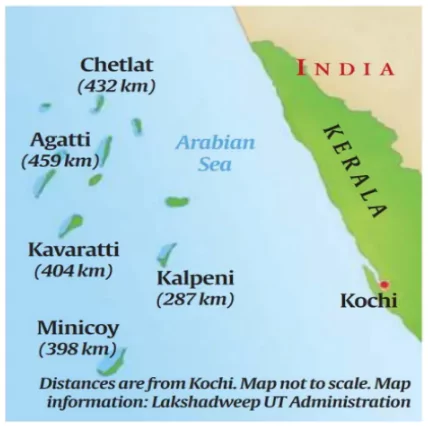 For Security: It is an important milestone in the security infrastructure at the strategically important Lakshadweep Islands.
For Security: It is an important milestone in the security infrastructure at the strategically important Lakshadweep Islands.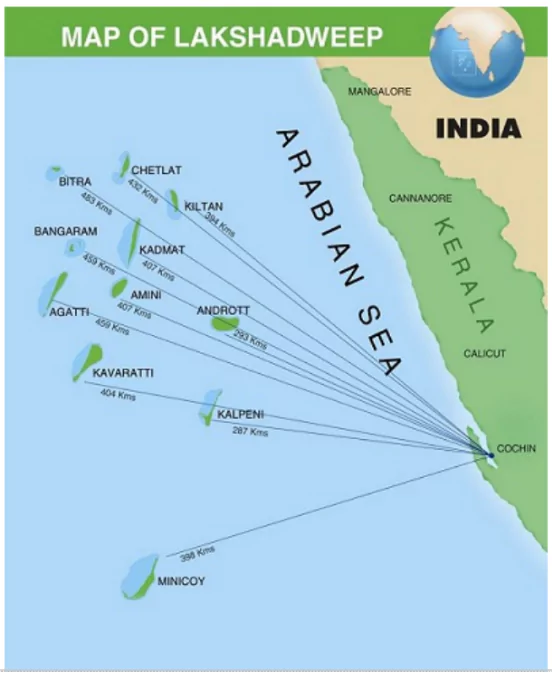
Map of Lakshadweep
The establishment of INS Jatayu demonstrates the Navy’s commitment to tapping India’s geographical advantage to further maritime interests.
News Source: PIB
| Must Read | |
| NCERT Notes For UPSC | UPSC Daily Current Affairs |
| UPSC Blogs | UPSC Daily Editorials |
| Daily Current Affairs Quiz | Daily Main Answer Writing |
| UPSC Mains Previous Year Papers | UPSC Test Series 2024 |
The Pew Research Center’s Spring 2023 Global Attitudes Survey suggests a strong trend for authoritarianism in Indian political perspective.
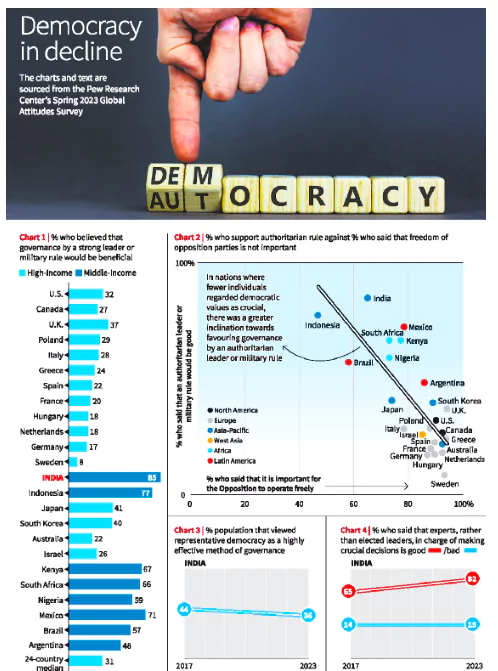
News source: The Hindu
| Must Read | |
| NCERT Notes For UPSC | UPSC Daily Current Affairs |
| UPSC Blogs | UPSC Daily Editorials |
| Daily Current Affairs Quiz | Daily Main Answer Writing |
| UPSC Mains Previous Year Papers | UPSC Test Series 2024 |
This article sheds light on the ‘conscience’, voice of conscience, ‘crisis of conscience’ and its role in ethical decision making.
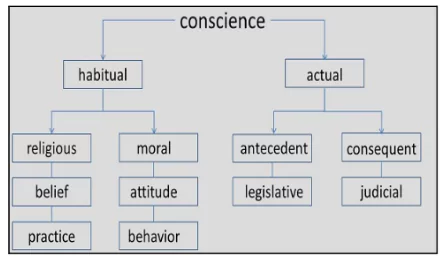 It is like an inner voice that guides us to do what is right.
It is like an inner voice that guides us to do what is right.
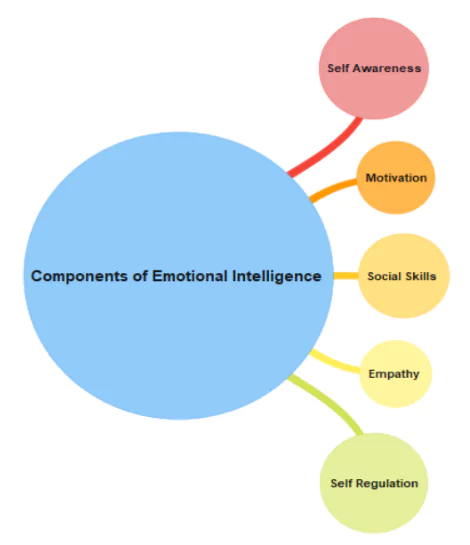 This lack of moral integrity leads to a reluctance to accept responsibility for failures or impasses in governance. This is the point where the conscience keeper helps to guide officials to tackle situations effectively.
This lack of moral integrity leads to a reluctance to accept responsibility for failures or impasses in governance. This is the point where the conscience keeper helps to guide officials to tackle situations effectively. News Source: Indianexpress
| Must Read | |
| NCERT Notes For UPSC | UPSC Daily Current Affairs |
| UPSC Blogs | UPSC Daily Editorials |
| Daily Current Affairs Quiz | Daily Main Answer Writing |
| UPSC Mains Previous Year Papers | UPSC Test Series 2024 |
Pakistan to hold its National Day celebrations in New Delhi after a four-year gap.
All-India Muslim League (AIML):
|
|---|
News source: The Indian Express
| Must Read | |
| NCERT Notes For UPSC | UPSC Daily Current Affairs |
| UPSC Blogs | UPSC Daily Editorials |
| Daily Current Affairs Quiz | Daily Main Answer Writing |
| UPSC Mains Previous Year Papers | UPSC Test Series 2024 |
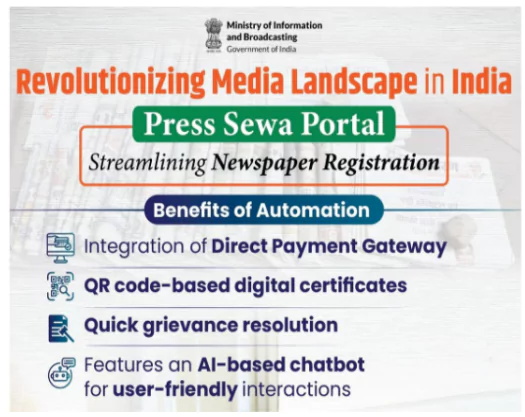
The Indian government has officially announced the implementation of the significant Press and Registration of Periodicals Act (PRP Act), 2023 and its Rules.
Features of Press Sewa Portal :
|
|---|
| Benefits of PRP Act | Drawbacks of PRP Act |
|
|
| Aspect | Press and Registration of Books Act, 1867 | Press and Registration of Periodicals Act, 2023 |
| Scope | Includes books and periodicals | Focuses only on periodicals |
| Declaration by printing press | Required before District Magistrate | Online intimation to Press Registrar General and District Magistrate |
| Declaration by publisher | Required before District authority | Not required, application for title and registration made simultaneously |
| Penalties | Severe penalties including imprisonment | Decriminalized, except for extreme cases of non-compliance |
| Cancellation of registration | Only by District Magistrate | Press Registrar General has power to suspend/cancel |
Significance
News Source: AIR
| Must Read | |
| NCERT Notes For UPSC | UPSC Daily Current Affairs |
| UPSC Blogs | UPSC Daily Editorials |
| Daily Current Affairs Quiz | Daily Main Answer Writing |
| UPSC Mains Previous Year Papers | UPSC Test Series 2024 |
Recently, in a study published in the Journal Science,a team of biologists from the University of Michigan examined snakes’ genetic and dietary habits.
Evolution of Organisms :
|
|---|
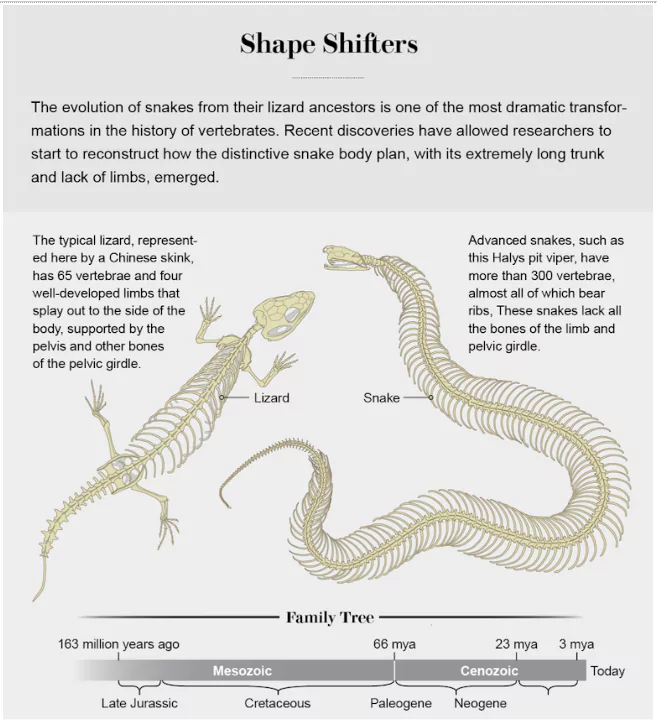
Scientists suspect such evolutionary bursts in some species may have happened multiple times, not just once, and are certain that understanding them is key to understanding the earth’s ecological future.
News Source : The Hindu
| Must Read | |
| NCERT Notes For UPSC | UPSC Daily Current Affairs |
| UPSC Blogs | UPSC Daily Editorials |
| Daily Current Affairs Quiz | Daily Main Answer Writing |
| UPSC Mains Previous Year Papers | UPSC Test Series 2024 |
Recently, A research officer at Loughborough University in the U.K. reported that universities’ quests for higher ranking mirrors the flawed pursuit of Gross Domestic Product (GDP) as the sole measure of a country’s prosperity.
World University Ranking
|
|---|
News Source : The Hindu
| Must Read | |
| NCERT Notes For UPSC | UPSC Daily Current Affairs |
| UPSC Blogs | UPSC Daily Editorials |
| Daily Current Affairs Quiz | Daily Main Answer Writing |
| UPSC Mains Previous Year Papers | UPSC Test Series 2024 |
Recently, Cuttack Rupa Tarakasi, Banglar muslin, Narsapur crochet lace products and Kutch rogan craft are among those given the Geographical Indication tag.
| Product | Origin | Description |
| Cuttack Rupa Tarakasi (Silver Filigree)
|
Cuttack, Odisha |
|
| Narasapur crochet lace products
|
Narsapur,Andhra Pradesh |
|
| Banglar Muslin
|
West Bengal | This finest sort of muslin is made of cotton, which are spun to create threads that maintain tensile strength at counts (above 300 counts and up to 600 counts) i.e. higher than any other cotton products. |
| Ratlam Riyawan Lahsun (Garlic)
|
Madhya Pradesh. | It has higher oil content and bold flavours than the other varieties. |
| Ambaji White Marble | Gujarat |
|
| Majuli Mask of Assam
|
Assam |
|
| Assam Majuli Manuscript Paintings
|
Assam |
|
News Source: The Hindu
| Must Read | |
| NCERT Notes For UPSC | UPSC Daily Current Affairs |
| UPSC Blogs | UPSC Daily Editorials |
| Daily Current Affairs Quiz | Daily Main Answer Writing |
| UPSC Mains Previous Year Papers | UPSC Test Series 2024 |
This Article is based on the news “Strengthening of Panchayats (Extension to Scheduled Areas) Act” which was published in the Down to Earth. Two-Day Regional Conference on the Strengthening of Panchayats (Extension to Scheduled Areas) Act took Place in Ranchi, Jharkhand.
What are Scheduled Areas?
|
|---|
Fifth and Sixth Schedules:
|
|---|
| Must Read | |
| NCERT Notes For UPSC | UPSC Daily Current Affairs |
| UPSC Blogs | UPSC Daily Editorials |
| Daily Current Affairs Quiz | Daily Main Answer Writing |
| UPSC Mains Previous Year Papers | UPSC Test Series 2024 |
This Article is based on the news “How bad is India’s single use plastic crisis?” which was published in the Down to Earth. According to a report launched during the Sixth United Nations Environmental Assembly (UNEA-6) at the United Nations Environment Programme (UNEP), the street food sector across India depends heavily on single use plastics.
| UNEA-6 focused on the theme, ‘Effective, inclusive and sustainable multilateral actions to tackle climate change, biodiversity loss and pollution‘. |
|---|

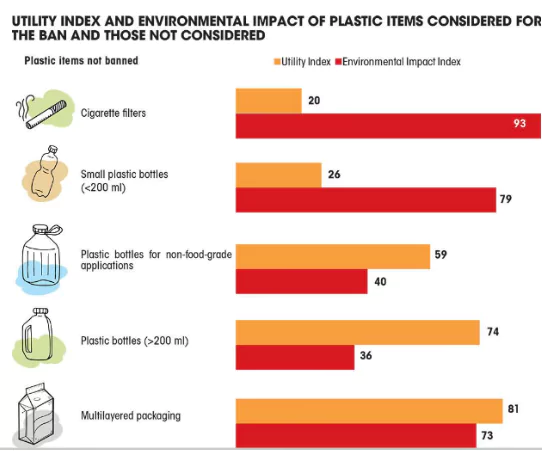
Case Study- Impact on Himalayas:
|
|---|
Survey Conducted By The Centre For Science And Environment (CSE):
Key Findings of the CSE Survey:
|
|---|
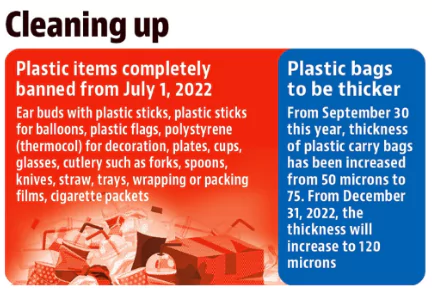
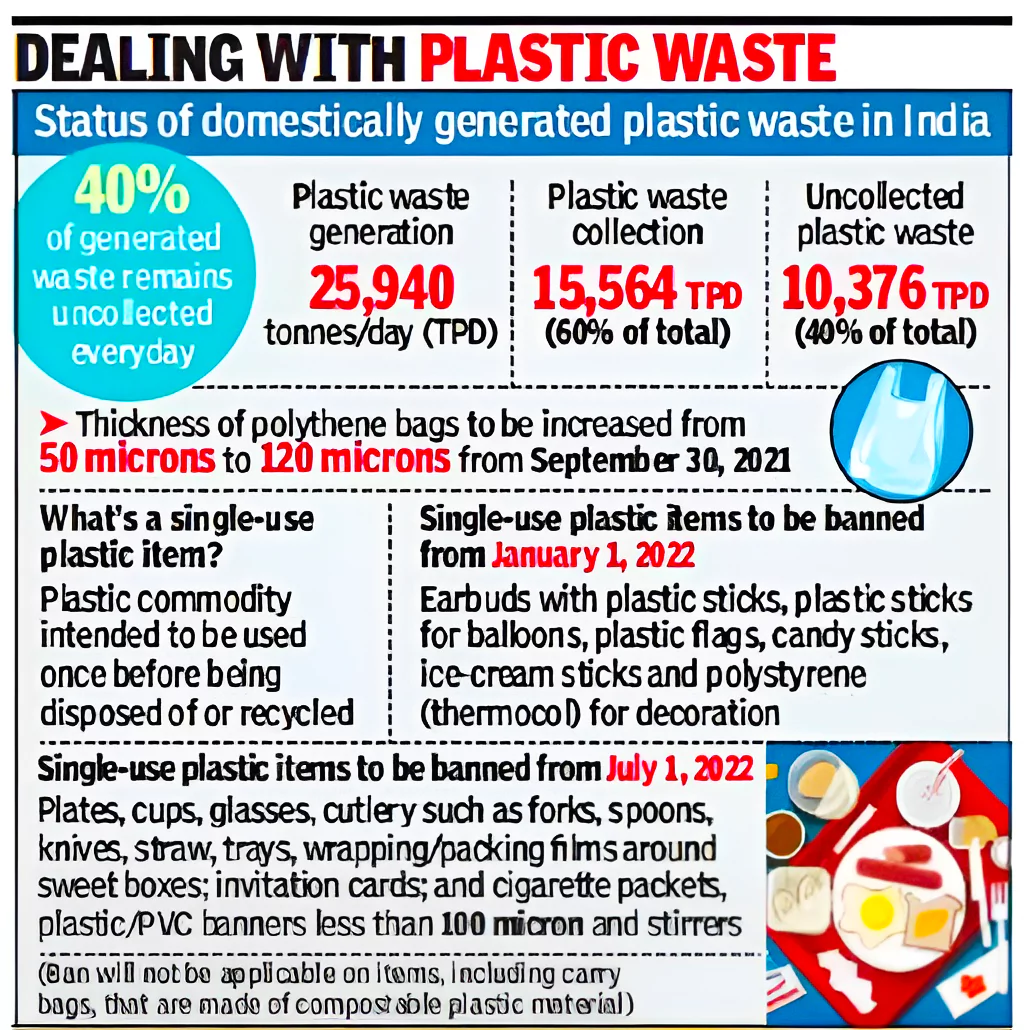 It introduced the concept of EPR to manage plastics in India.
It introduced the concept of EPR to manage plastics in India.| Components/Parts | Deal With |
| Supply-Side Interventions |
(*SMS- Stop Supply, Manufacturing & Sale) |
| Demand-Side Interventions |
|
| Creating An Enabling Environment for Phasing Out single use Plastics |
(*AA- Alternatives & Awareness) |
| Managing SUP Legacy Waste |
|
India’s Comprehensive Approach to Tackling Plastic Pollution
About Plastic Overshoot Day:
|
|---|
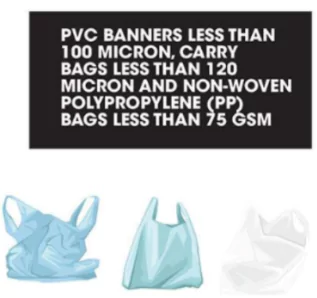 Work on Transparency: CPCB will have to start sharing the data that it collects from private players through the EPR and the state authorities through the SUP monitoring module.
Work on Transparency: CPCB will have to start sharing the data that it collects from private players through the EPR and the state authorities through the SUP monitoring module.| Must Read | |
| NCERT Notes For UPSC | UPSC Daily Current Affairs |
| UPSC Blogs | UPSC Daily Editorials |
| Daily Current Affairs Quiz | Daily Main Answer Writing |
| UPSC Mains Previous Year Papers | UPSC Test Series 2024 |
<div class="new-fform">
</div>
